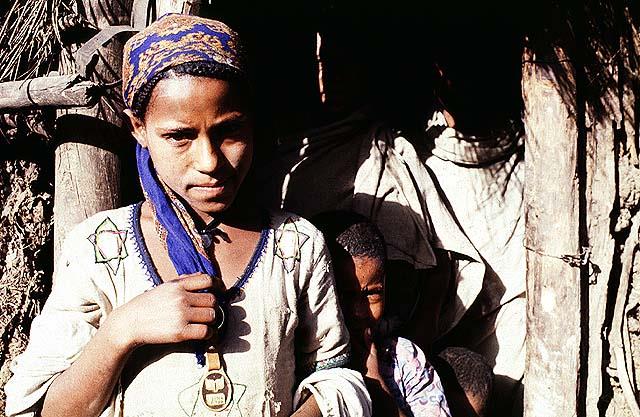Names of “Beta Israel” from Ethiopia
The Memi de Shalit Jewish family names database at the Museum of the Jewish People includes over 1,200 explanations regarding the meanings and origins of names used by the Jews of Ethiopia.
All names of Ethiopian origin included in the database are given names and not hereditary family names. In Ethiopia, like in other Jewish communities in the past, each individual had his or her given name, which in some cases was accompanied by the father’s given name.
The majority of the given names in our database are sayings or expressions in either Amharic or Ge’ez, and in some cases in Tigrinya, languages used by the Jews of Ethiopia.
Ge’ez, also spelled Geez, and sometimes called Ethiopic, is an ancient Semitic language related to Amharic, the official language of Ethiopia. Unlike other Semitic languages, both Ge’ez, Amharic and other kindred Ethiopian languages are written from left to right. Ge’ez, which is not spoken any longer, has been for many centuries the liturgical language of the Ethiopian Church; the Bible was translated into Ge’ez before the 7th century CE. It is generally assumed that Ge’ez was the original language of the Beta Israel (The House of Israel) as the Jews of Ethiopia are generally known. The Bible, translated from the Septuagint Greek version, is read in Ge’ez, and most ancient religious texts of Beta Israel are written in Ge’ez.
Amharic, also called Amarinya, Amharinya, or Kuchumba, is also a Semitic language and is spoken today by about one third of the population of Ethiopia, mainly in the central highlands of the country. In recent times Amharic has been the main language spoken by the Jews of Ethiopia.
Tigrinya, also spelled Tigrigna, and sometimes called Tigray, or Tigrai, is another Semitic language close to Ge’ez and spoken in northern regions of Ethiopia by about six million people including Jews.
The names of the Jews of Ethiopia can be categorized in various groups according to their meaning and origins: names that reflect everyday life activities or various aspects of nature, names of Biblical origin or that echo local traditions, as well as names of grandparents and other ancestors. Several first names generally reflect the desire for the happiness and well being of the new born as expressed by the name giver, usually the parents or grandparents.
The mass immigration of the Jews of Ethiopia to Israel, especially during the 1980s and early 1990s, brought about changes in the traditional Jewish Ethiopian society; one of the results being that many given names became fixed hereditary family names.
Following are a few examples:
-
Mulualem
Mulualem is a given name for both male and female meaning “whole world” in Amharic, much like the Hebrew phrase “olam male”.
-
Kabede
Kabede is a male given name meaning “heavy and strong” in Amharic, much like the Hebrew “kaved”. Kabede reflects the name-giver’s desire for the new child to grow strong and powerful.
-
Nikahywot
Nikahywot is a female given name meaning “source of life” in Ge’ez (“nika” = source; “hywot”= life), resembling the Hebrew “heyot”, which means “to be” or “to live”. The new child is regarded as a source of life and regeneration.
-
Chekolech
Chekolech is a female given name meaning “she hurried” in Amharic. The name is generally given to a first child.
-
Chamashwork
Chamashwork is a female given name meaning “golden shoes” in Amharic (“chama” = shoes, “work” = gold). It is a symbol of extreme beauty.
-
Abaynesh
Abaynesh is a female given name meaning “Like the Nile” in Amharic (the Nile being the central river in Ethiopia, a source of water and life). It is often used to describe great generosity.


